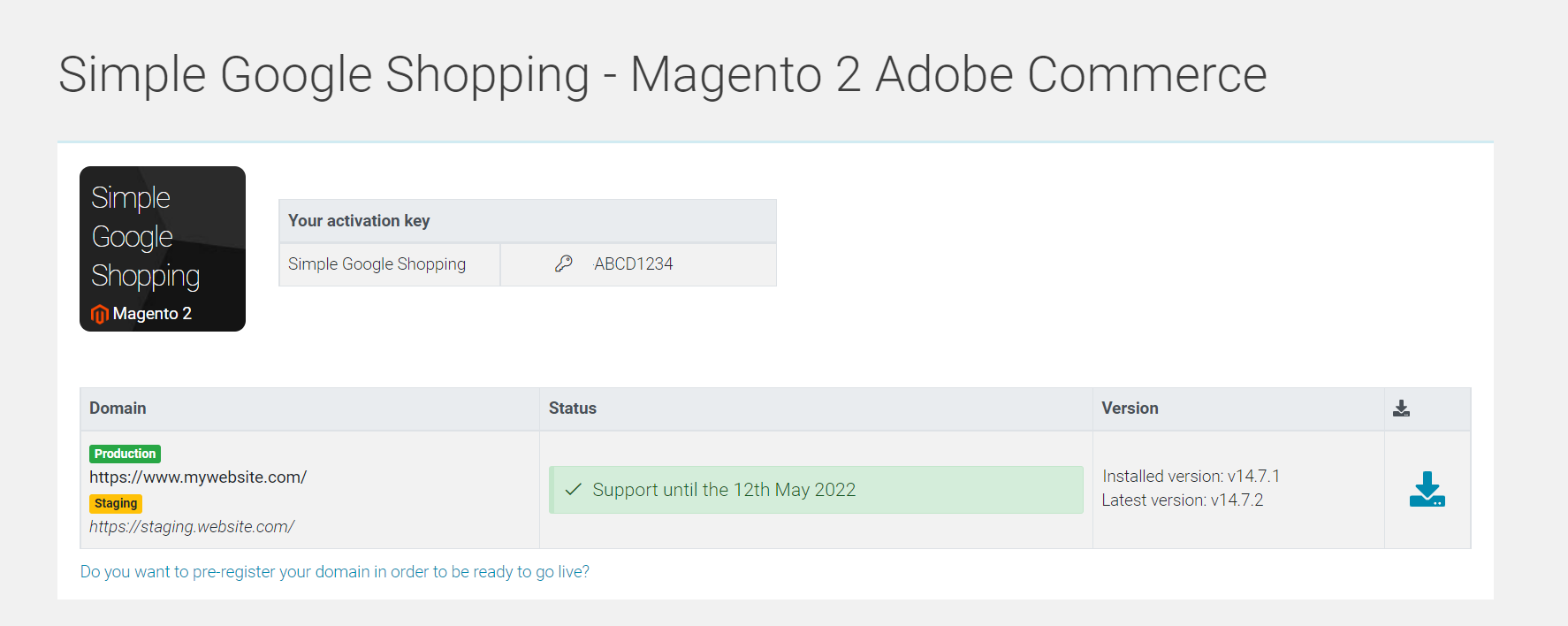
What is WooCommerce vs WordPress?
How can you differentiate between WooCommerce and WordPress? What are the pros and cons of using each of these platforms? Is it crucial to understand these differences before choosing a platform for your online business? These are some of the thought-provoking questions that the concept of WooCommerce vs WordPress presents to digital entrepreneurs and website owners.
At the root of the confusion, many fail to understand fully that WooCommerce is actually a plugin for WordPress, not a standalone product. As stated by experts from Search Engine Journal and WP Beginner, the lack of clarity regarding WooCommerce and WordPress usually comes from the misunderstanding that WooCommerce is a separate platform in and of itself. However, based on various surveys conducted across the United States, many website owners are facing this issue, prompting the need for more comprehensive and accessible information on the matter. Therefore, this article proposes to shed some light on these platforms and help potential website owners make an informed choice accordingly.
In this article, you will learn about the fundamental differences between WooCommerce and WordPress, detailing extensively on their diverse features, advantages and limitations. The comparison will also place a heavy emphasis on their applicability in different business scenarios, with a keen eye on incorporating real-world examples for a practical understanding.
Additionally, we will also offer a detailed guide explaining how to set up and use WooCommerce on a WordPress site, allowing you to equip yourself with the necessary skills to navigate these platforms effectively. By the end of the article, you will gain a comprehensive understanding of WooCommerce and WordPress as separate entities, and how they correlate and complement each other in the grand scheme of online businesses.

Key Definitions: WooCommerce and WordPress
WordPress is an open-source content management system. It’s essentially a platform that allows you to build and manage your own website without needing to know code. Perfect for beginners, WordPress is widely used to create blogs, business websites, and e-commerce stores.
WooCommerce, on the other hand, is a WordPress plugin, used specifically to convert a WordPress website into a full-fledged e-commerce store. It will enable the addition of products, a shopping cart and a checkout process, effectively turning a regular WordPress site into an online shop. You often find WooCommerce being used by businesses that wish to sell products or services online.
WooCommerce and WordPress Unravelled: Breaking Down the Intricacies
The Core Distinction: WordPress and WooCommerce
At the heart of the matter, WordPress is an all-encompassing content management system (CMS), utilized primarily for the establishment of websites and blogs. It’s a powerful platform, offering a vast array of features and functionalities that make website creation an intuitive and straightforward process. You can establish a fully functional site within a few hours, even if you’re a total novice.
On the other hand, WooCommerce is not a standalone platform- it’s an open-source plugin designed explicitly for WordPress. Founded in 2011, it quickly surged in popularity to become the leading eCommerce platform globally. WooCommerce transforms your existing WordPress site into a fully operational online store, equipped to manage an unlimited number of products, integrate with popular payment gateways, and handle crucial eCommerce functionalities.
Degree of Customization: How They Stack Up
- WordPress was initially developed as a blogging platform but has expanded to handle different types of websites. With thousands of themes and plugins available, the potential for customization is virtually limitless. Whether you’re building a portfolio, an online magazine, or a business website, WordPress proves its versatility.
- On the flip side, WooCommerce’s strength resides in its robust eCommerce functionality. Despite being a plugin, it provides a level of customization that rivals many standalone eCommerce platforms. With WooCommerce, you can customize your store’s look and feel, manage inventory, calculate taxes, and more.
It’s salient to note that the primary function of WooCommerce depends on WordPress – it cannot exist outside its ecosystem. Essentially, WooCommerce leverages the robustness of WordPress and infuses eCommerce functionality into it, thus creating an overarching platform that’s perfect for businesses that want to operate an online store without building one from scratch.
Lastly, it’s essential to understand that WordPress and WooCommerce are not rivals. They are products from the same company, Automattic, offering solutions to different sets of challenges. WordPress is a CMS, and WooCommerce is an eCommerce plugin that works on top of WordPress. Together, they bring about a harmonious blend of content and commerce, making online business efficient and profitable. As a testament to the popularity of this combination, more than 28% of all eCommerce stores are now powered by WooCommerce.
Navigating the Digital Commerce Labyrinth: Profound Insights into WooCommerce and WordPress
Probing Deeper into WordPress and WooCommerce
Is it always as simple as comparing apples and oranges when we delve into WordPress and WooCommerce? Initially, it is vital to ascertain that WordPress and WooCommerce are not adversaries, but endowment and enhancement of each other. WordPress is essentially a powerful, flexible content management system, primarily designed to create blogs or websites. It is open-source software allowing users to build professional-looking websites or blogs with minimal coding experience.
On the other side of the coin, WooCommerce is a plugin specifically designed for WordPress. It bestows upon WordPress the ability to function as an e-commerce platform. WooCommerce converts a WordPress website into a full-featured e-commerce store, proffering capability to list products, implement shopping cart functionalities, execute secure transactions, and handle inventory. In essence, WooCommerce is an e-commerce solution, while WordPress serves as a platform for that solution.
Deciphering the Digital Conundrum
Two afflictions persist when it comes to creating a comprehensive digital shopping arena. Firstly, the complexity in setting up an online store might prove daunting, especially for non-technical users. WordPress, being a robust content management system, does solve the problem to some extent. However, it still requires coding knowledge to customize entirely. Secondly, the issue accelerates when the requirement of e-commerce facilities intertwines, urging for additional plugins and tools.
Integrating WooCommerce into WordPress alleviates these predicaments, providing a seamless, user-friendly solution. So, while WordPress might be the high-performance vehicle for websites, WooCommerce can be illustrated as a turbocharger boosting power. It makes WordPress more advantageous for e-commerce purposes while negating the necessity for any other e-commerce platform and detailed coding knowledge.
Real-Life Examples of WordPress and WooCommerce Integration
Now, let’s explore some instances where WordPress and WooCommerce combine to form an unbeatable pair. Right from small businesses, artists, entrepreneurs to large-scale enterprises, many have leveraged the symbiotic relationship between WordPress and WooCommerce to burgeon their online presence.
For instance, Porter & York, a brand selling raw meat, have created an impressive online storefront attaching WooCommerce to their WordPress website. It facilitated easy navigation, product listing and purchase, thus elevating their online business.
Another example can be the website of the singer-songwriter, Sukhé. Here, WooCommerce comes into play to create a straightforward yet effective platform for his merchandise, augmenting his WordPress website’s functions.
These cases typify only a slice of the possibilities achievable with WordPress and WooCommerce. They synergistically create a comprehensive platform, simplifying the journey throughout the digital commerce labyrinth.
Embracing the Power of Digital Platforms: Digging Deep into the WooCommerce vs WordPress Debate
Is it Apples to Apples Comparison?
Mulling over the dissimilarities between WordPress and WooCommerce might lead to the question, is it a fair comparison? They are both powerful platforms, but they serve different purposes in the digital realm. WordPress is an open-source content management system, designed primarily for blogging and website creation. It allows adaptation and versatility in forming digital assets with an array of themes and plugins. One such plugin is WooCommerce. Designed explicitly for e-commerce, WooCommerce converts WordPress websites into fully functional online stores. So essentially, WooCommerce is an extension of WordPress, specially formed to tap the market of e-commerce. Thus, putting WordPress and WooCommerce head-to-head is not an apple to apple comparison; it’s more like comparing apples to a specific type of apple pie.
Delineating The Crux of The Matter
In the digital ecosystem, using the right resources can dictate triumph or downfall. Herein lies the crux of the matter. While WordPress alone is versatile and capable, it does not have built-in e-commerce capabilities. You could create a website to showcase products but, selling them directly from the site isn’t feasible without additional integrations. This is where WooCommerce enters the picture.
As an e-commerce plugin, WooCommerce extends WordPress’s functionality, making it possible to set up an online store, manage inventory, handle payments, and monitor shipping. On the flip side, WooCommerce relies entirely on WordPress. You wouldn’t typically use WooCommerce without WordPress because it’s not a standalone platform. It’s an enhancement, a powerful tool that boosts WordPress’s capabilities, transforming it into a full-fledged e-commerce platform.
Spotting Winning Strategies in The Digital Terrain
Several successful online retailers have capitalized on the strengths of both platforms. For instance, Porter & York, a famous meat retailer, uses WooCommerce on their WordPress site to sell their products online. By integrating WooCommerce, they’ve been able to showcase their high-end fresh meats while also offering customers an intuitive, reliable, and secure online shopping experience.
Similarly, Sodashi, an Australian skincare brand, uses WooCommerce catalog mode to disable e-commerce functionalities during maintenance, transforming their online store into a WordPress showcase site temporarily. They seamlessly change from an informative website to an interactive online store and vice versa, highlighting the adaptive power of using WooCommerce in conjunction with WordPress.
In both these scenarios, the combination of WordPress’s flexibility and WooCommerce’s e-commerce capabilities has been leveraged to create a harmonious, smooth, and effective online presence. These success stories underscore the importance of not viewing WordPress and WooCommerce as competitive platforms but as symbiotic tools that, when used together, can craft a more potent digital platform.
Conclusion
Could you imagine the tremendous boost your business could enjoy if you leveraged the most renowned content management system and a top-rated ecommerce platform hand in hand? This aptly captures the relationship between WordPress and WooCommerce. However, it is essential to drown out some general confusion – WordPress and WooCommerce are not competitors but partners. WordPress is one of the most utilized content management systems in the world, housing over 60% of all CMS hosted websites globally. WooCommerce, on the other hand, is a powerful eCommerce plugin designed explicitly for WordPress, enabling businesses to sell their goods or services online directly from their WordPress site.
As a reader of our enlightening articles, we sincerely encourage you to stick and continue this insightful journey with us. To stay updated on these eye-opening articles, consider subscribing to our blog and seizing the advantage to be among the first to receive new insightful contributions. The world of eCommerce, and, specifically, the conversation around WordPress and WooCommerce is an expansive one, and there’s so much more to unravel. By following us, you don’t just read about these topics; you stay apace of new developments, trends and best practices that could help your business reach new heights.
We hope this discourse has clarified the distinction between WordPress and WooCommerce for you. Remember, staying informed is only useful if it underpins actionable measures. Hence, as you anticipate our new releases, consider how you can apply these insights to leverage the WordPress and WooCommerce partnership to propel your business. The eCommerce world is ever-evolving, and new updates and features could significantly transform how businesses operate. Hence, your consistency in following our blog ensures you’re always in the loop. We’re always excited about sharing these insightful articles with you, and we’re confident that they will continue to demystify concepts around WordPress and WooCommerce, among other topics. Looking forward to taking this journey with you!
F.A.Q.
1. What is WordPress?
WordPress is an open-source content management system that allows you to build and manage websites. It comes with a flexible and user-friendly interface, and it’s easy to customize according to your business needs.
2. What is WooCommerce?
WooCommerce is a free eCommerce plugin that allows you to sell anything, beautifully. Built on WordPress, it is customizable and easy to install, turning your website into a fully functional eCommerce store.
3. How do WordPress and WooCommerce work together?
WooCommerce works as a plugin within the WordPress system that adds eCommerce functionality to your WordPress website. With it, you can easily create a professional and attractive online store to sell your products or services.
4. Can I use WooCommerce without WordPress?
No, WooCommerce is specific to WordPress—it is actually a WordPress plugin. It is built to integrate seamlessly with WordPress, so you will need a WordPress website to use WooCommerce.
5. What are the advantages of using WooCommerce on a WordPress site?
Using WooCommerce on a WordPress site allows for complete customization of your online shop. It comes with features like secure payments, configurable shipping options, and it has a vast assortment of extensions that can add a variety of functionality to your site.



